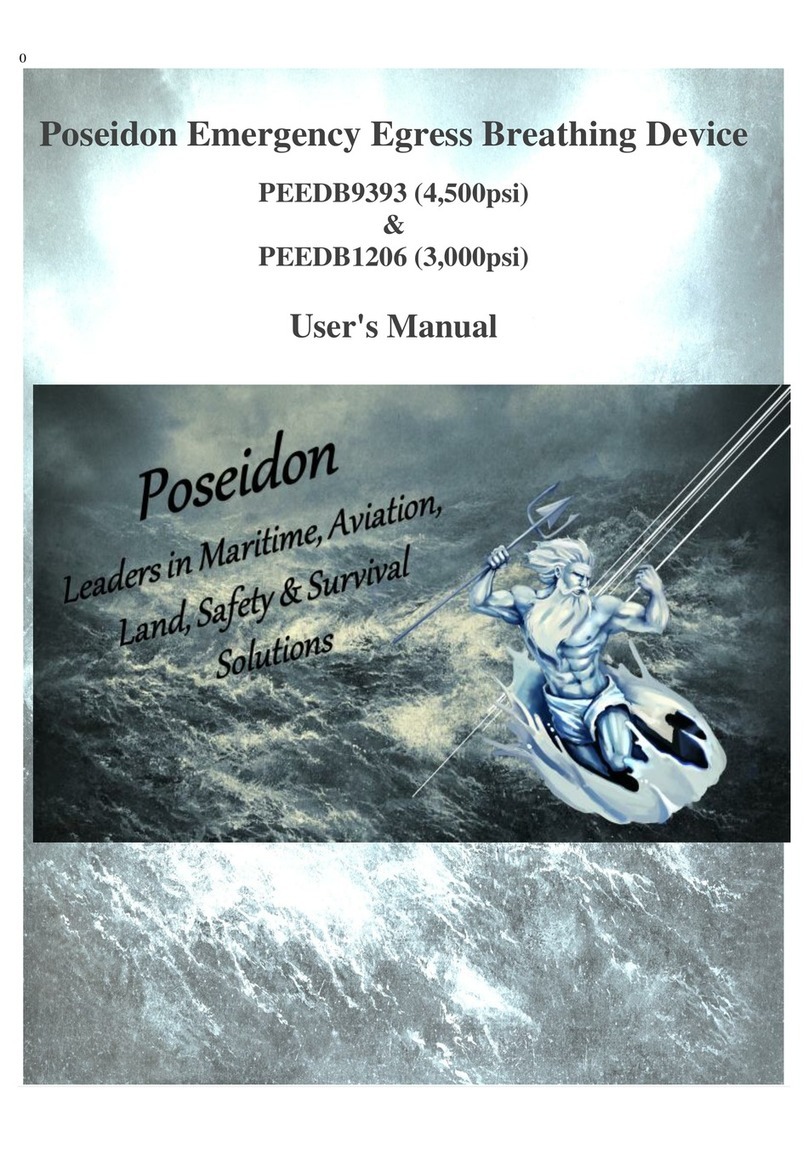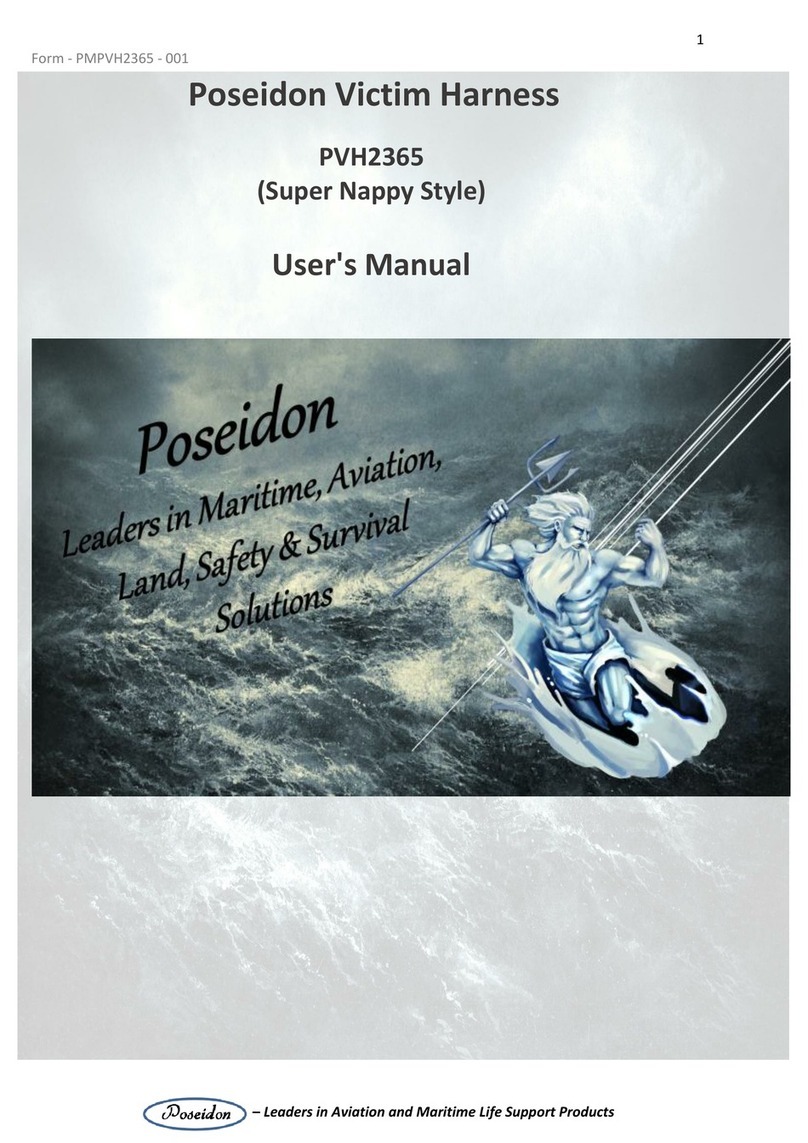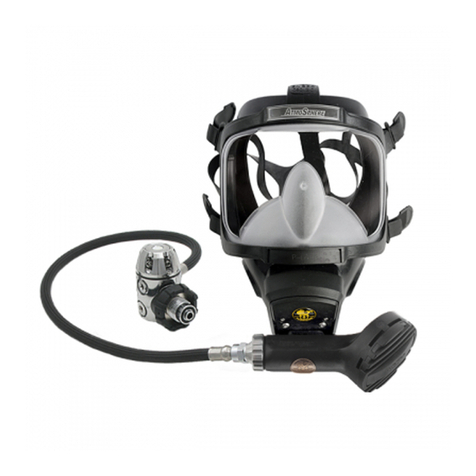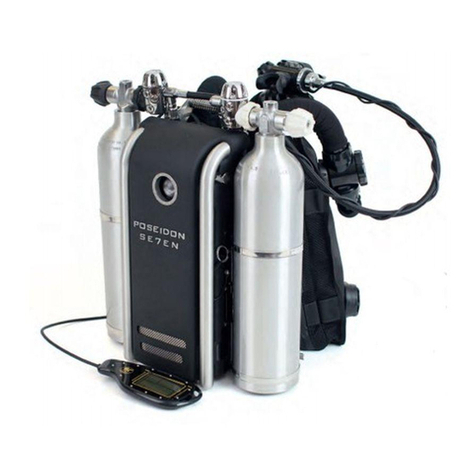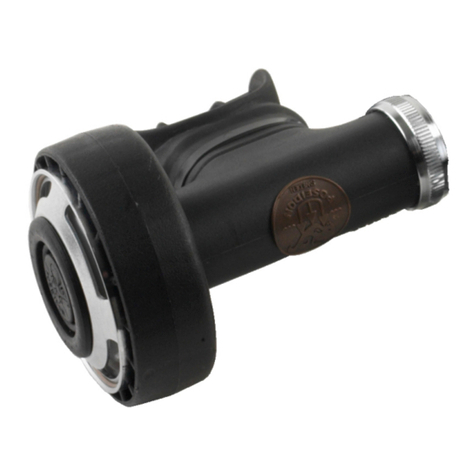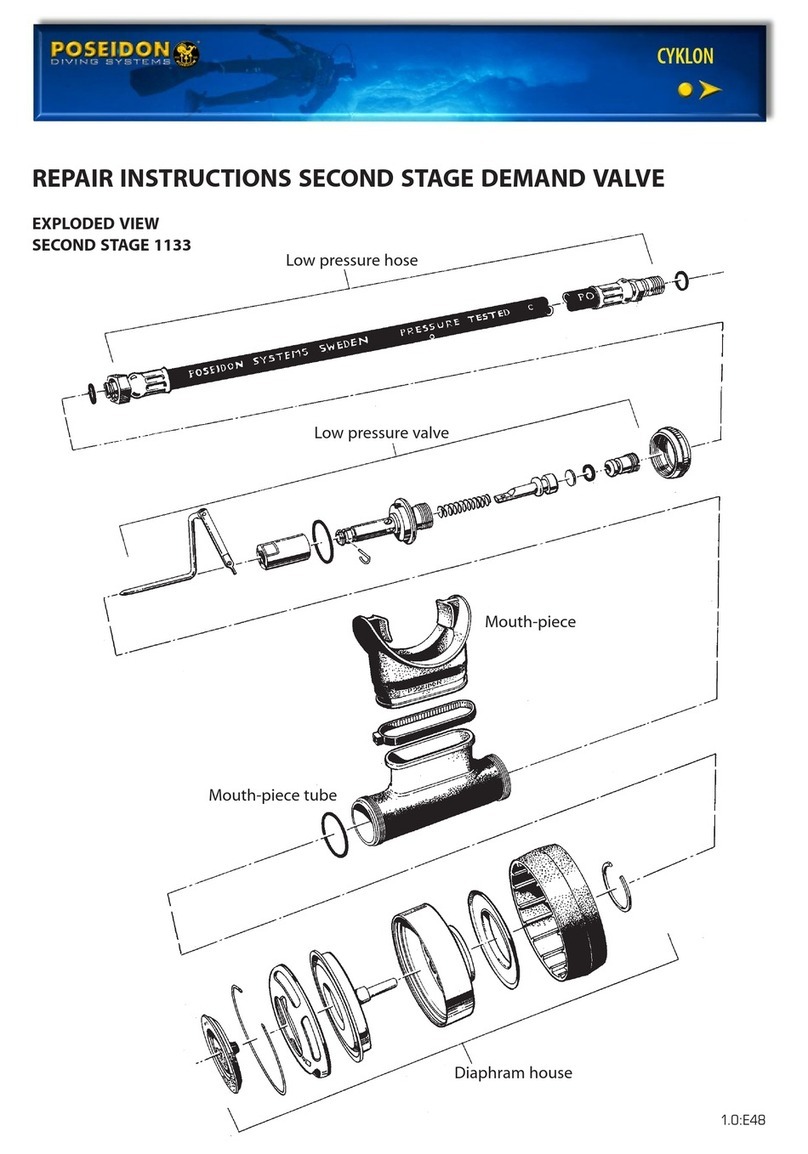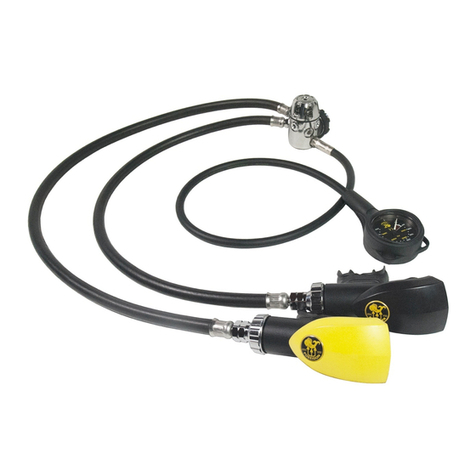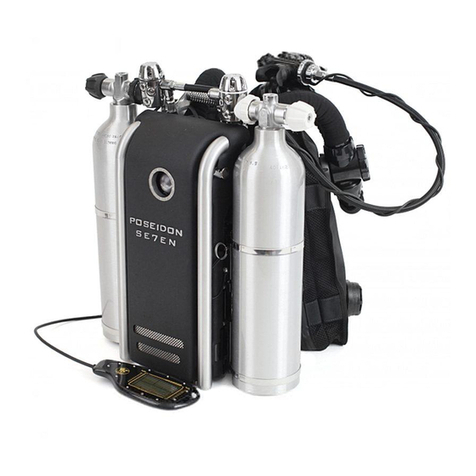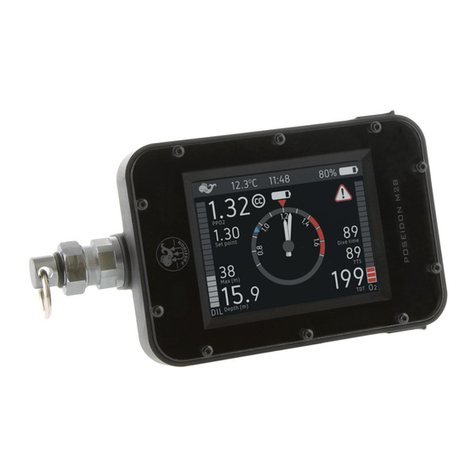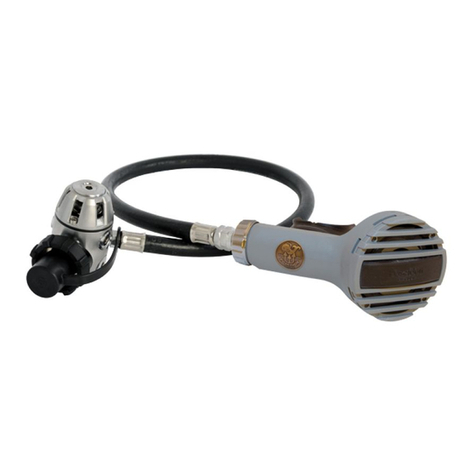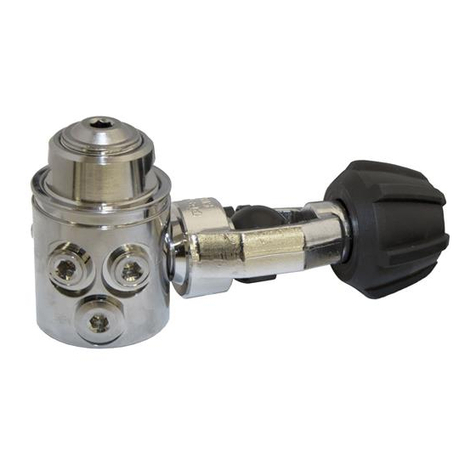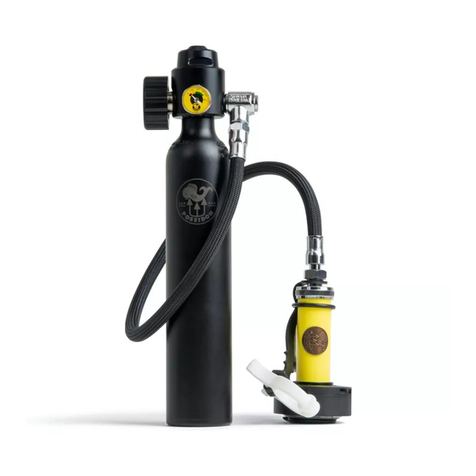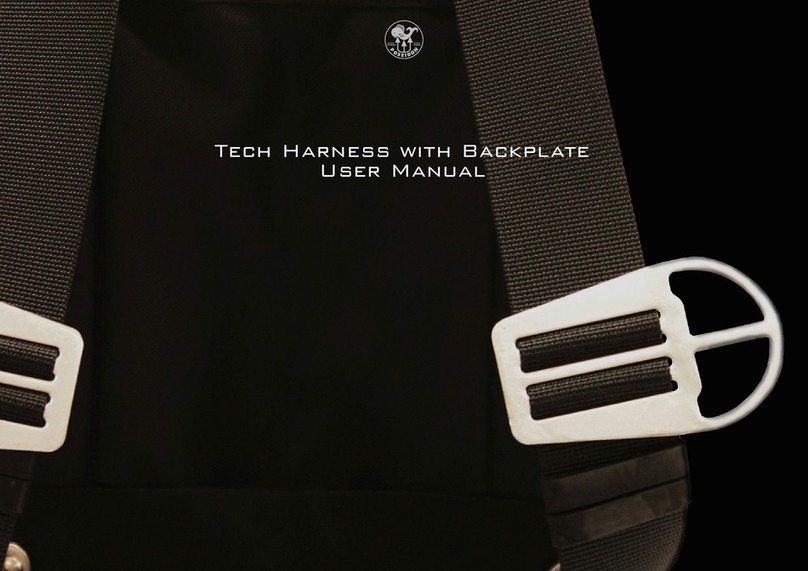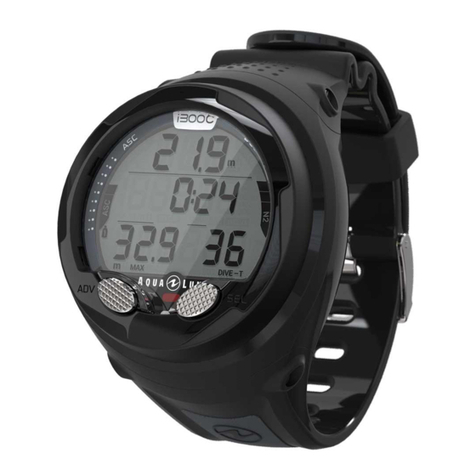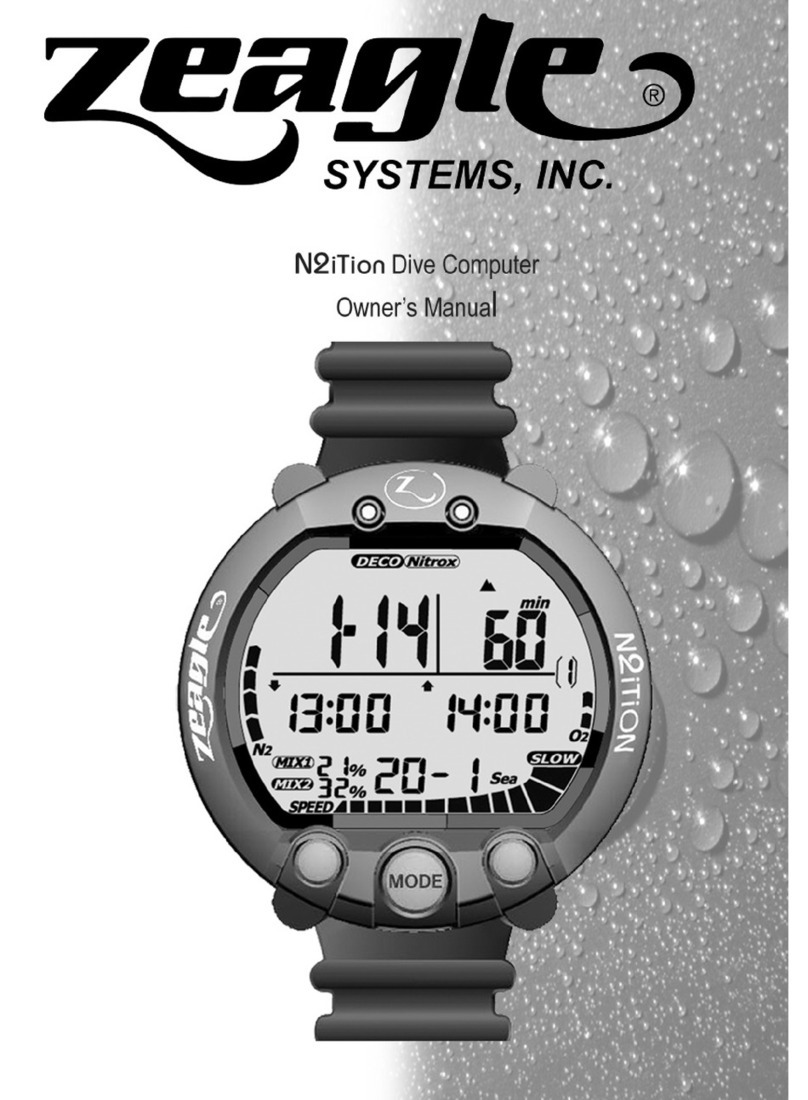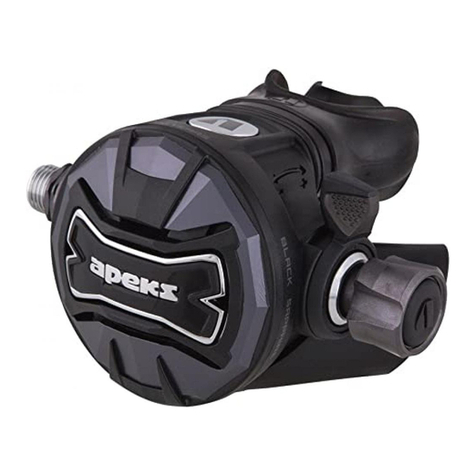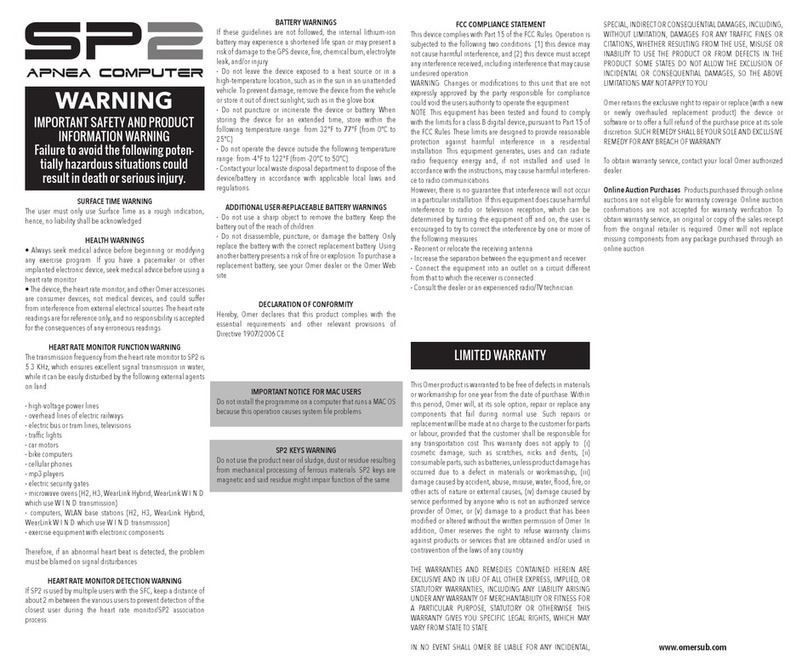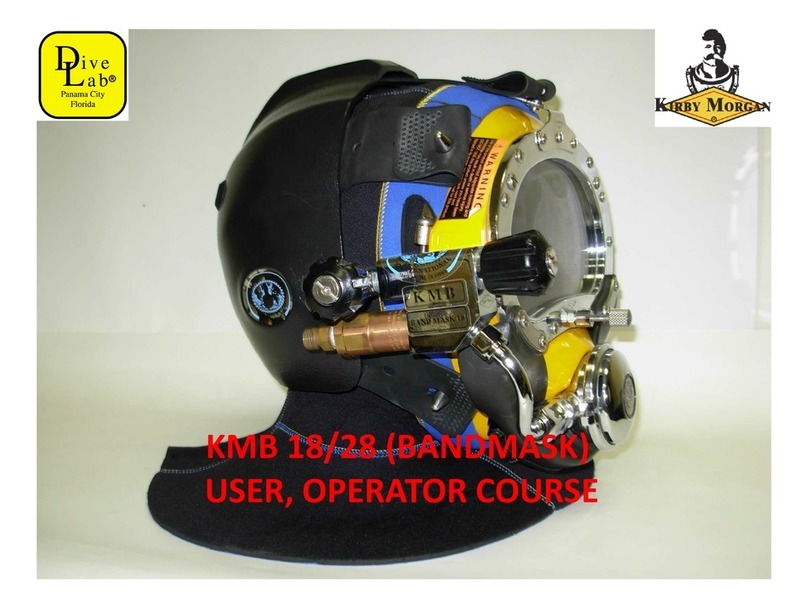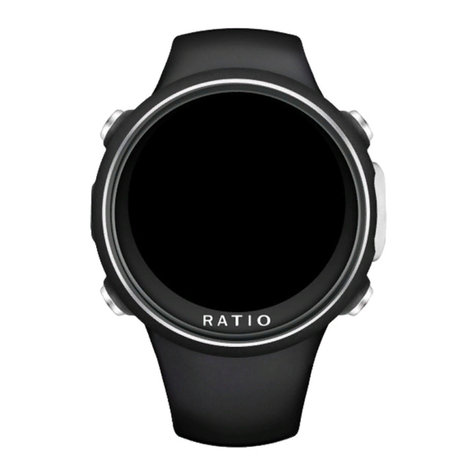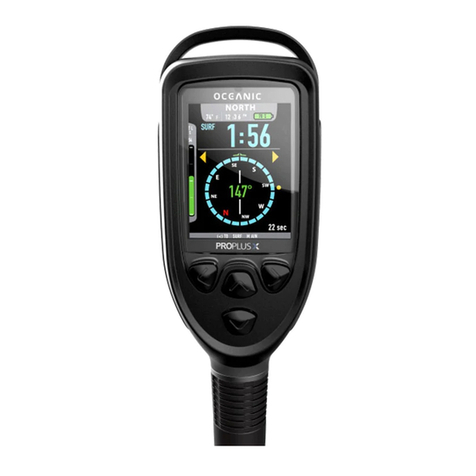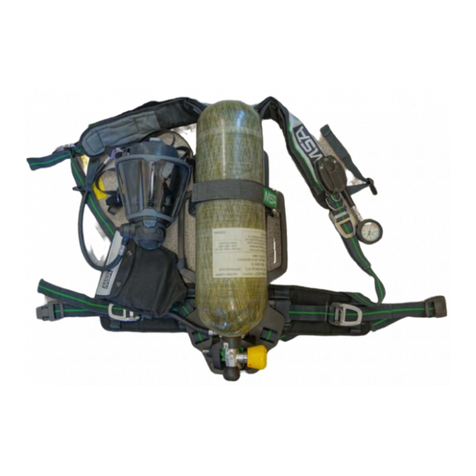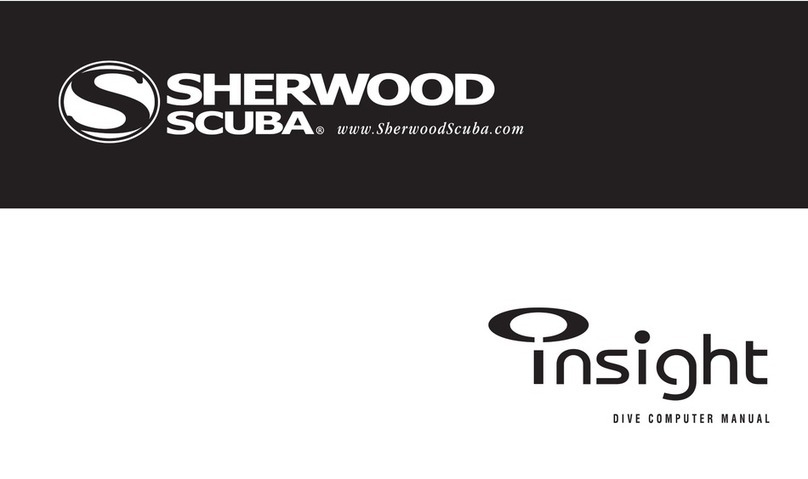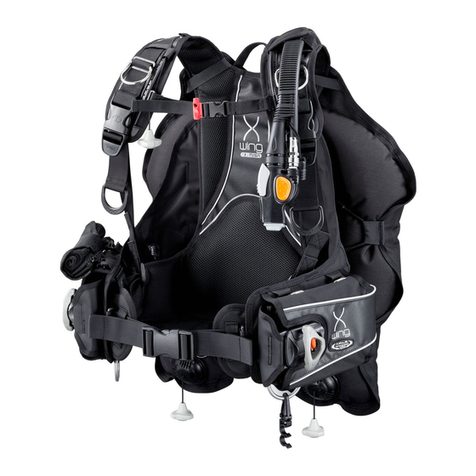Page 6
Diving
WARNING:
Do not use your BCD as an assist or “lift bag” for bringing
objects to the surface. These objects may be lost during the
ascent, creating a sudden increase in buoyancy and loss of
buoyancy control.
Do not inhale gases from inside bladder.
Keep sand and other contaminations out of the oral ination
mouthpiece and valve button. Under certain conditions
contamination can cause the valve to not close completely.
If this occurs while diving, shake the valve while operating
it several times. If the valve leaks or remains inoperable
immediately terminate the dive. Diving with a leaking BCD or
with valves that do not operate properly may result in loss of
buoyancy control that could result in serious injury or even death.
Be aware that the mesh at the bottom of the wing needed for
effective draining of water, do expose an increased risk for
bladder puncture. Make sure to protect this from coming in
contact with sharp objects.
Buoyancy compensating is achieved by inating and deating the BCD bladder.
Inating the BCD using the power inator is done by depressing the inator button using short
bursts. Continuous depressing of the button can cause you to become excessively buoyant.
Orally inating of the bladder is achieved by exhaling a small amount of air into the inator.
Place your lips on the inator mouthpiece and exhale while depressing the oral ination button.
After exhaling release the oral ination button to prevent air from escaping.
Deating the BCD is done by using either the inator’s oral ination button or any of the APRV:s.
For deation using the inator oral ination button, hold the inator in an upright position so that it
becomes the highest point of the BCD and depress the oral ination button.
Deation of the BCD using an APRV is done by activating the valve that is placed on the hig-
hest portion of the BCD depending on the diver’s attitude during the actual period of time. The
two APRV:s placed on the rear lower portion of the BCD are activated by pulling the knob.
For activating the inator integrated MDV pull the inator as if to extend the corrugated hose.
WARNING:
Avoid attempting to deate an already empty bladder as this will
allow seawater to enter. A ooded BCD can cause buoyancy
difculties.
In case of inator malfunction or freezing, the inator might continuously inate the bladder.
Start by detaching the inator hose and continuously deate the bladder by depressing the oral
ination button while holding the inator at the highest possible position to increase deation ef-
fectiveness.
After Dive
After nishing your dive start with undoing your weight pockets.
Let water out from your BCD that may have entered the bladder during your dive.
It is important to open up the breathing loop to allow the hoses and other components to dry
overnight. This is, by far, the best procedure for keeping theinside of the breathing loop clean.
All four breathing hoses should be removed from their attachment points (mouthpiece, shoulder-
ports, and main housing), and placed such that water inside will drain out, and somewhere with
relatively dry, well-circulated air.
It is good practice to rinse, disinfect, and dry the counterlungs after a dive. Any disinfectant solu-
tion that doesn’t have a negative effect on plastics and/or rubber can be used for this purpose.
Poseidon recommends using a disinfectant called Gigasept™ or Virkon.
Inate the BCD, either orally or by using the inator. With the BCD almost fully inated, rotate it
back and forth a few times so that the entrapped water collects inside.
Then let the water out through the inator, by holding the BCD up side down, with the inator
at the lowest point and depressing the oral ination button. Rinse your BCD in fresh water both
internally and externally after every dive. After seawater have been emptied as described above,
ll approximately 1-2 litres of fresh water into the BCD via the inator. Partly inated, rinse the BCD
internally and then let the water out as described above.
